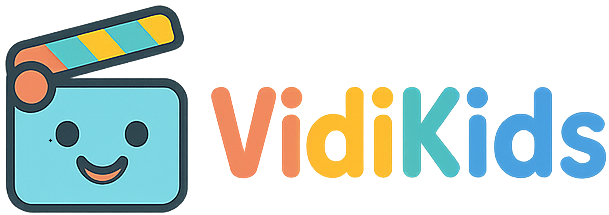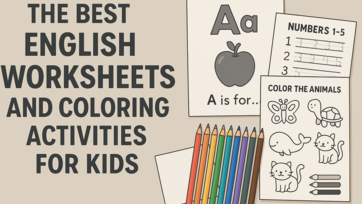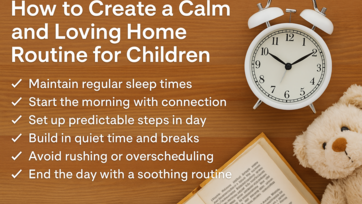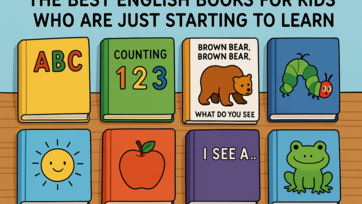Helping children practice English speaking skills doesn't have to feel like a classroom drill. In fact, the more natural and playful the approach, the more children are likely to engage—and retain what they learn. Between the ages of four and eight, children are especially receptive to language through interaction, rhythm, imagination, and movement.
This article offers a range of practical, fun, and teacher-tested activities that make speaking English feel like second nature. You don’t need expensive materials—just time, consistency, and a bit of creativity.

Show and Tell
A classic that never fails. Children bring an object from home—anything they like—and describe it to others.
You can guide them with sentence starters like:
-
“This is my robot.”
-
“It’s red and it makes noise.”
-
“I got it for my birthday.”
After their short talk, let others ask simple questions: “What does it do?” or “Do you play with it every day?”
This activity helps build confidence, encourages full sentences, and supports vocabulary development in a meaningful context.
Hot Seat
In this fun guessing game, one child sits with their back to the board where a word or picture is shown. The rest of the group gives clues without saying the word itself.
For example, if the word is “banana,” clues might include:
-
“It’s yellow.”
-
“Monkeys eat it.”
-
“It’s a fruit.”
The child in the “hot seat” must guess the word based on the descriptions. This game is fast-paced, full of laughter, and excellent for both speaking and listening practice.
Back-to-Back Drawing
This one is great for pair work. One child is given a picture, and their partner sits with their back turned. The first child must describe the image in English so that their partner can draw it without seeing.
You’ll hear phrases like:
-
“Draw a big circle.”
-
“Put a star inside the square.”
-
“There’s a cat next to the tree.”
Afterward, comparing the two drawings often leads to a lot of fun—and some excellent language reflection. It trains children to use precise language and improves their listening comprehension too.
Story Building
Children love making up stories, especially when they get to do it together. Begin with a simple sentence: “Once upon a time, there was a boy who could fly.” Then, each child adds a sentence to continue the story.
There are no right or wrong ideas, only creativity. You’ll hear things like:
-
“He flew over a mountain.”
-
“He met a talking dog.”
-
“They went to space to find chocolate.”
This playful format encourages spontaneous speaking and reinforces sentence structure in a lighthearted way.
Role-Playing Real-Life Scenarios
Children often enjoy acting out everyday situations. Whether it’s ordering food in a pretend restaurant, shopping at a toy store, or visiting a doctor, role-play helps them use English in real-life contexts.
You might hear:
-
“Can I have some juice, please?”
-
“How much is this teddy bear?”
-
“I feel sick. My head hurts.”
Use basic props or just imagination—either works. This kind of activity supports natural communication, especially when it’s framed around routines children already understand.
The Whisper Game
Also known as “telephone,” this is a listening and speaking challenge that always brings smiles.
Whisper a sentence to the first child in a line, like “The cat is sleeping on the sofa.” Each child whispers what they hear to the next. By the end, the final version is often very different—and very funny.
Beyond entertainment, this game teaches careful listening, pronunciation, and sentence clarity.
Describe and Guess
Use a set of picture cards (animals, objects, food, etc.). One child picks a card and describes it without saying its name. The others must guess.
Examples:
-
“It’s big, grey, and has a long nose.” (Elephant)
-
“You eat it. It’s sweet. It’s round and red.” (Apple)
You can switch roles to keep the game moving. It’s a great way to practice adjectives and speaking in full sentences.
Simple Question Ball
Write questions on a soft ball using a marker. Toss it gently between children. When someone catches it, they read (or you read) the question closest to their right thumb.
Example questions:
-
“What is your favorite food?”
-
“Do you like dogs or cats?”
-
“What do you do after school?”
This helps children get used to answering everyday questions and builds fluency in a relaxed, playful way.
Using Songs for Speaking Practice
Even though songs are usually considered listening or singing practice, they can also be used to promote spoken English. Choose songs with clear lyrics and pause after each line, encouraging children to repeat or predict the next words.
Ask questions like:
-
“What does the bus do in the song?”
-
“Who says ‘shh, shh, shh’?”
You can even create new lyrics together to familiar tunes. This encourages children to play with language patterns and boosts their confidence.
Speaking Tips for Adults Working with Children
-
Always model the language first. Say the sentence clearly and naturally before asking them to repeat or respond.
-
Avoid correcting every mistake. Focus more on fluency and confidence, especially at early stages.
-
Encourage full sentences: Instead of “apple,” guide them to say “I like apples.”
-
Make the environment safe and encouraging. Children are much more likely to speak if they feel relaxed and not judged.
Final Thoughts
Speaking is often the most intimidating part of learning a new language, even for adults. For children, the challenge is usually less about fear and more about opportunity. When given the chance to speak freely, playfully, and often, kids naturally begin to take ownership of the language.
Whether you're a parent or educator, your role is to provide consistent chances for meaningful interaction. With simple games and routines like those above, you can turn any moment into an opportunity to build vocabulary, confidence, and communication skills.
The key is not perfection — it’s participation. And the more children speak, the more they grow.
; ?>







